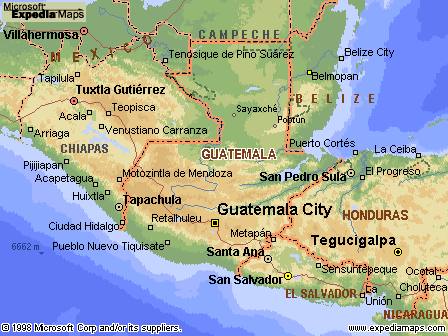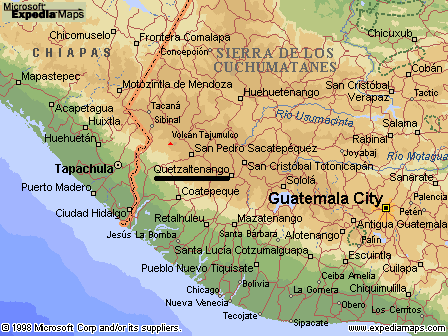

Guatemala: Ancient Land of Beauty and Struggle
 |
Guatemala is the most populous country in Central America, with over 10 million residents. More than 55 percent of the population is indigenous (of Mayan descent) while 35 percent are Ladino (mixed Mayan and European descent). There are 22 different recognized language groups within the indigenous communities nationwide. In general, the economic and political power lies in the hands of the Ladinos, while the majority of poor people are indigenous. Guatemala continues to suffer from extremely unequal land distribution, as 2 percent of the landowners hold 68 percent of the cultivable land. The majority of indigenous people survive through subsistence farming. Few of them own their own land; many supplement their income by working in the large plantations that grow fruit and coffee for export, earning between $1 and $1.50 per day. |
|
Quetzaltenango
Quetzaltenango, commonly known as Xela, is the second largest city in Guatemala, with a rapidly growing population of about 200,000 residents. The city is set in the valley formed by ten surrounding volcanoes, one of which sends clouds of volcanic dust into the air every few days. (The name Xela comes from the Quiche Maya word "Xelaju", meaning "beneath the ten gods.") Amidst this stunning geography, Xela's urban development can alsp be described as volcanic; it has been both rapid and devoid of planning. Urbanization has covered land with sprawling and often poorly constructed dwellings and commercial buildings. As a result, the rural areas surrounding the city have become urbanized, leaving many campesinos, who traditionally survived by farming, without a means to sustain themselves. The massive influx of people coming to the city from the mountains in search of a better life are similarly bereft of employment, with few new jobs being created or job training opportunities. These families typically settle on the periphery of the city, areas now of great poverty and hopelessnes. |
 |
|
In these circumstances, children are often forced to help support their families. Many parents spend a great deal of time away from home, either taking their children with them or sending their children to work too. Mothers who have been abandoned or who have alcoholic husbands support their families by working as vendors outside cantinas and bars at night. Or early mornings, they can be found in bus terminals, accompanied by their young children. As the center of the city is where most people have work, children are often found there selling products like fruit or cheap household items, washing cars, or shining shoes. (It is through shoe shining that children discover cobbler's glue, a favored inhalent among street children.) They grow accustomed to spending the majority of their time in the street and are exposed to the many dangers and influences there.
|
EDELAC Homepage || What is EDELAC? || Quetzaltrekkers Hiking Tours || How you (and Barbie) can help || Contact Us || Where to Stay and Study